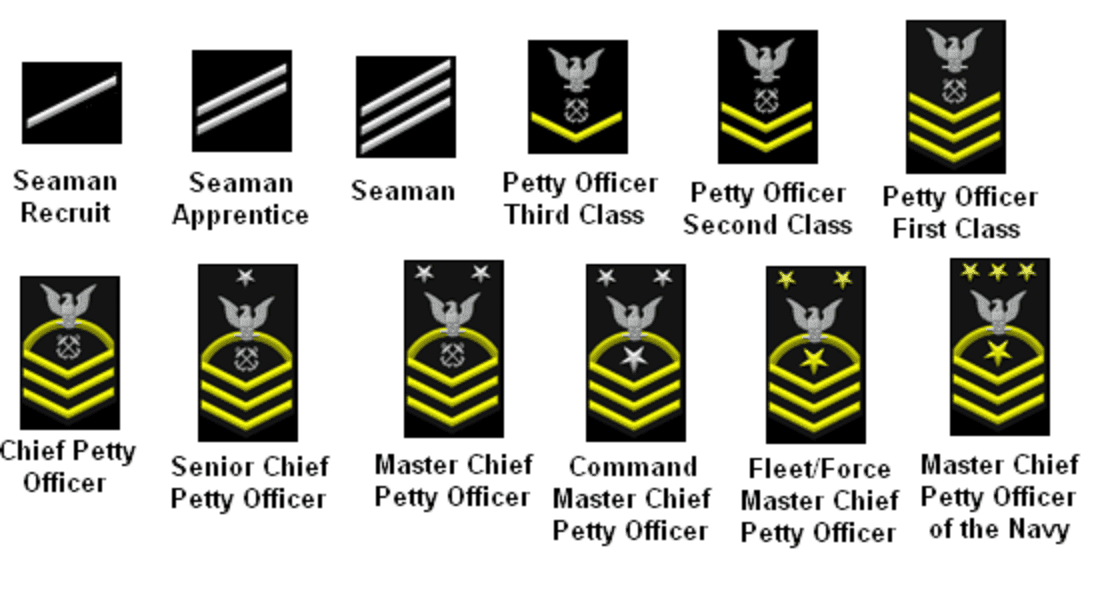7 Naval Ranks

Introduction to Naval Ranks

The naval ranks are a system of hierarchical structures used by navies around the world to signify the level of responsibility, authority, and expertise of their personnel. Understanding these ranks is essential for navigating the complex world of naval operations and protocols. In this article, we will delve into the details of naval ranks, exploring their meanings, responsibilities, and the progression from the lowest to the highest ranks.
Junior Naval Ranks

At the foundation of the naval rank structure are the junior ranks, which include: - Seaman Recruit: The most junior rank, where new recruits begin their naval career. - Seaman Apprentice: After completing basic training, recruits are promoted to this rank, indicating they are in the process of learning their specific job skills. - Seaman: Having gained experience and skills, sailors are promoted to this rank, signifying they have a good understanding of their duties.
Non-Commissioned Officer (NCO) Ranks

As sailors gain more experience and take on additional responsibilities, they can be promoted to non-commissioned officer ranks, which include: - Petty Officer Third Class: The first of the NCO ranks, indicating a sailor has achieved a level of expertise in their field and is responsible for leading smaller teams. - Petty Officer Second Class: With more experience, petty officers are promoted to this rank, taking on more significant leadership roles and mentoring junior sailors. - Petty Officer First Class: This rank signifies a high level of proficiency and leadership ability, with these sailors often leading larger teams and making critical decisions.
Senior Non-Commissioned Officer Ranks

The senior NCO ranks are reserved for the most experienced and capable sailors, including: - Chief Petty Officer: A highly respected rank that requires significant experience and mastery of a sailor’s trade. Chief Petty Officers are leaders and mentors, responsible for guiding junior personnel. - Senior Chief Petty Officer: This rank indicates a sailor has achieved a high level of technical expertise and leadership ability, often serving as department leaders on ships. - Master Chief Petty Officer: The highest NCO rank, reserved for sailors who have demonstrated exceptional leadership, technical knowledge, and dedication to the navy.
Commissioned Officer Ranks

Commissioned officers are responsible for the overall command and strategy of naval operations. The ranks include: - Ensign: The most junior commissioned officer rank, typically held by new officers as they begin their careers. - Lieutenant Junior Grade: As officers gain experience, they are promoted to this rank, taking on more responsibilities in ship operations and leadership. - Lieutenant: A significant rank that signifies an officer has gained considerable experience and is capable of leading departments or smaller ships. - Lieutenant Commander: With more seniority, officers are promoted to this rank, often serving as executive officers on ships or in senior staff positions. - Commander: This rank is associated with significant command responsibilities, including commanding smaller ships or serving in senior positions ashore. - Captain: A prestigious rank that signifies an officer has reached a high level of command authority, often commanding major ships or serving in flag officer positions.
Flag Officer Ranks

The highest ranks in the navy are the flag officer ranks, which include: - Rear Admiral (Lower Half): The first of the flag officer ranks, indicating an officer has achieved a high level of command and strategic responsibility. - Rear Admiral (Upper Half): With more experience, admirals are promoted to this rank, taking on significant leadership roles in fleet or task force operations. - Vice Admiral: A rank that signifies an admiral has reached a high level of strategic command authority, often serving in positions such as fleet commanders or senior staff officers. - Admiral: The highest rank in the navy, reserved for officers who have demonstrated exceptional leadership, strategic thinking, and dedication to the naval service.
📝 Note: The specific ranks and their responsibilities can vary slightly between different navies, but the overall structure and progression remain similar.
To summarize, the naval ranks are a complex system designed to reflect the level of expertise, responsibility, and leadership ability of naval personnel. From the junior ranks to the flag officer ranks, each step signifies a sailor’s or officer’s growth and dedication to their career and the naval service. Understanding these ranks is crucial for effective communication, coordination, and operation within naval environments.
What is the purpose of having different naval ranks?

+
The different naval ranks serve to signify the level of responsibility, authority, and expertise of naval personnel, facilitating a structured and efficient command system.
How do sailors progress through the ranks?

+
Sailors progress through the ranks based on their experience, performance, and completion of training and education requirements, with promotions reflecting their growing expertise and leadership abilities.
What are the responsibilities of commissioned officers versus non-commissioned officers?

+
Commissioned officers are responsible for the overall command and strategy of naval operations, while non-commissioned officers focus on technical expertise and leadership within their specific fields, supporting the command structure.



